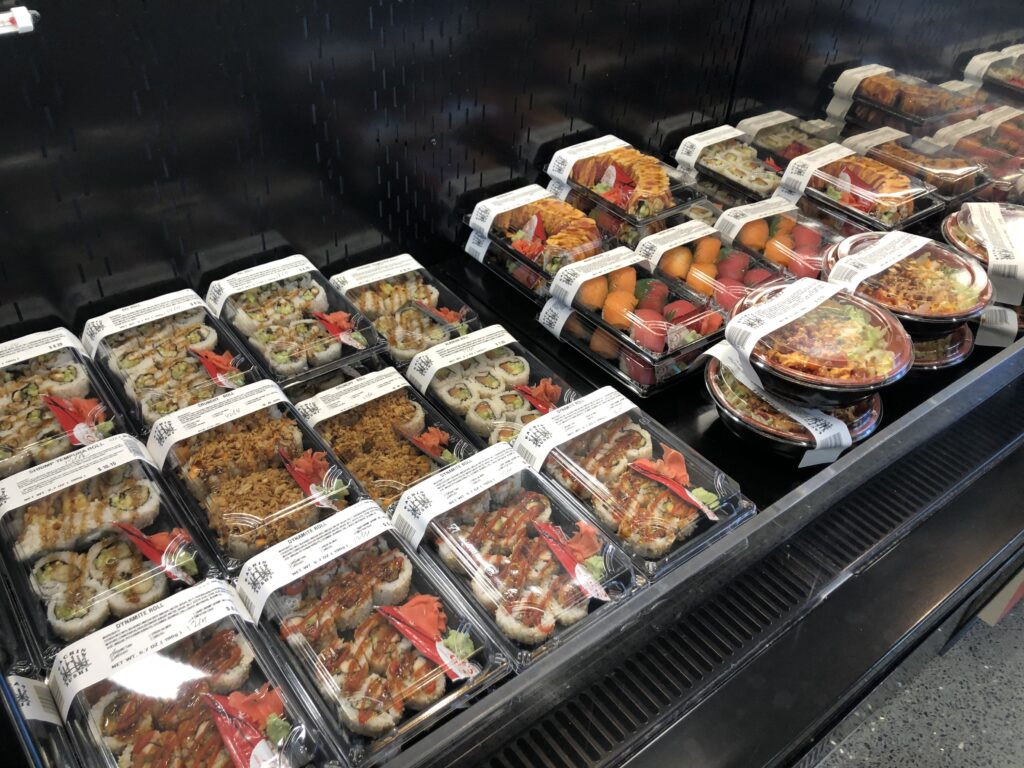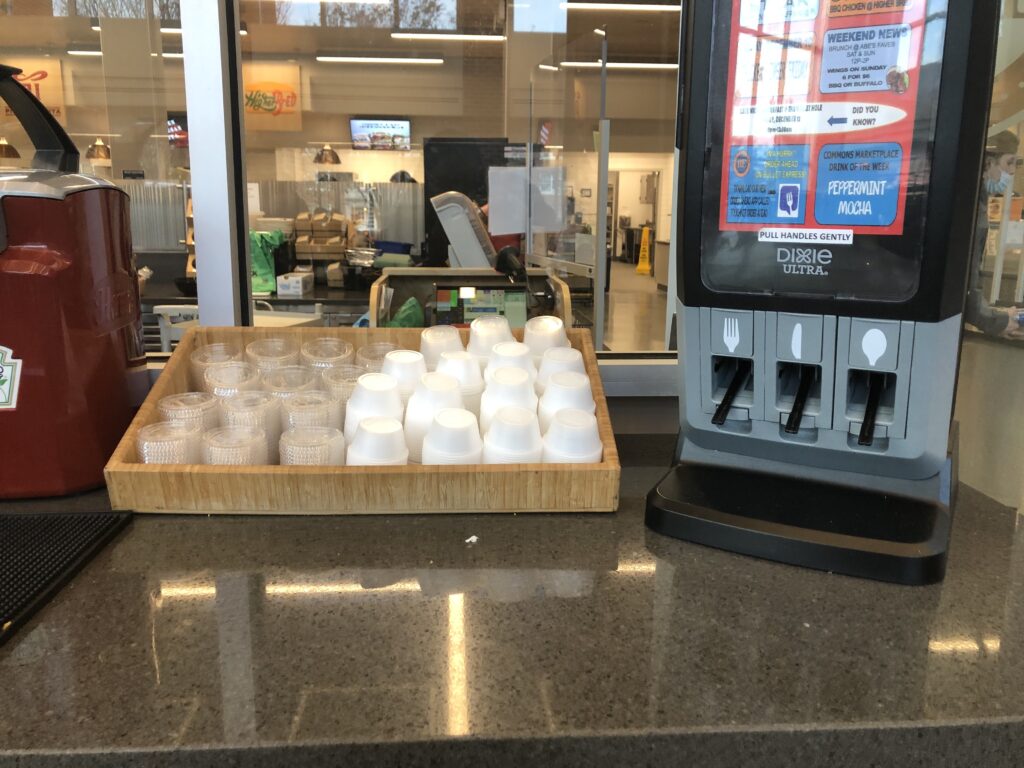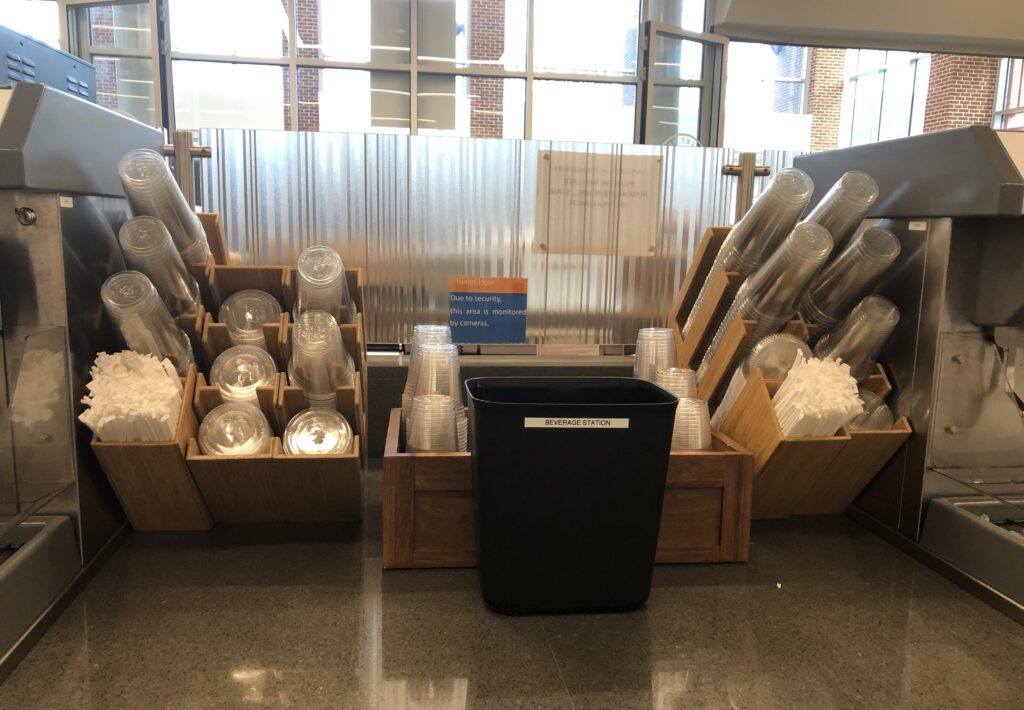Where can you find single-use plastic at Gettysburg College?
A lot of places actually. When students go to the Commons to get a Starbucks drink: plastic cups. When students buy groceries or buy things in town: plastic bags and plastic packaging. When students go to get late-night snacks from 7/11: plastic packaging. When students get food from Halal and CJ’s at 2 AM: styrofoam containers and plastic forks.
There is a clear pattern here of single-use plastic and dining. In fact, the number one source of single-use plastic is related to dining. Dining at Bullet produces a ton of plastic waste. It is time for dinner at Bullet! Tonight I will get a sushi tray, a bag of chips, a soda, and a fruit cup. And to top it off, I am going to throw it all into a plastic bag to carry it. Every single part of my meal contains plastic including the fork I will use to eat it. Why is this? Because dining at Bullet, targeted for upperclassman, is designed to grab and go. In order to make dining convenient, we use single-use plastic because that is the easiest method.
Though there have been improvements such as compostable take-out boxes or the implementation of an extra cost for plastic bags, we still have a long way to go. And at the end of the day, the average student does not care about putting the environmental choice over their convenience.
This is not to say that Bullet dining is entirely to blame. As consumers, our personal actions have an impact. If we refused to eat at Bullet unless there were sustainable options then those sustainable options would be provided. The larger corporations that Bullet purchases its packaging and food from need to switch to more sustainable packaging at an affordable price so that Bullet can buy that option.
Single-use plastics are items intended to be used once and then disposed of whether that be in the trash or recycled (Wales, 2018). This includes typically thought of items like plastic straws, water bottles, silverware, cups, bags, etc., but also includes items not typically thought of like styrofoam, cigarette butts, food wrappers, etc.
Many people think plastic is not a problem because it can be recycled. However, of the plastics produced, only only “[9%] of world’s [9] billion tonnes of plastic has been recycled” (U.N. Environment, 2018). Recyclables not getting recycled is damaging our personal and environmental health. Plastics make it to landfills, the ocean, waterways, and so on which is dangerous because plastics do not biodegrade and up as microplastics (Wales, 2018). “It’s expected that the amount of plastic littering the world’s oceans will triple within a decade” (Said-Moorhouse, 2018).
Plastics are harming your personal health too. Plastic contaminants “our soil and water. The toxic chemicals used to manufacture plastic gets transferred to animal tissue, eventually entering the human food chain. Styrofoam products are toxic if ingested and can damage nervous systems, lungs, and reproductive organs” (Wales, 2018).
Said-Moorhouse. (2018, March 21). Ocean plastic predicted to triple within a decade. CNN health.
United Nations Environment Programme. (2018). Single-use plastics: A roadmap for sustainability.
Wales, M. (2018, July 18). Why single-use plastics are bad-and what we can do about it. Nature’s Path Foods.




